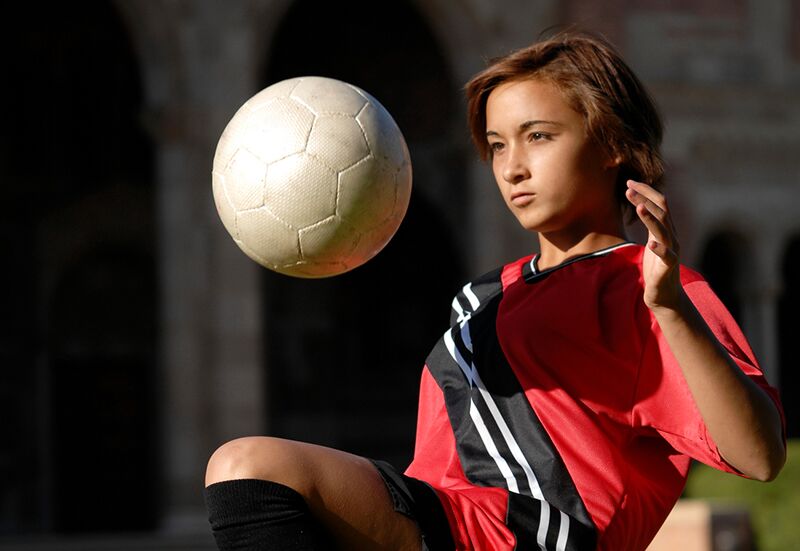How to develop an Egyptian physical literacy curriculum
 Mark Verbeek has never been satisfied with the status quo. For the past two decades he’s been a physical education teacher in Ontario, and repeatedly he’s found himself struggling to convince parents of the importance of physical literacy. He’s been met with resistance from those who believe in tradition over innovation, and who don’t yet understand how the tenets of Long-Term Development in Sport and Physical Activity could benefit their children.
Mark Verbeek has never been satisfied with the status quo. For the past two decades he’s been a physical education teacher in Ontario, and repeatedly he’s found himself struggling to convince parents of the importance of physical literacy. He’s been met with resistance from those who believe in tradition over innovation, and who don’t yet understand how the tenets of Long-Term Development in Sport and Physical Activity could benefit their children.
But all of that’s about to change. Verbeek, Sport for Life’s Manager of Innovation, has been invited to create an innovative school-based curriculum at a brand new international academy currently being constructed in Egypt. When it opens its doors in September 2020, it will host approximately 750 students. Once it’s fully constructed that number will balloon to 3500.
In other words: it’s a really big job, with far-reaching implications.
“We’ve never gone down this road before. We’ve had approaches to curriculum that are sport-based or wellness-based, and then there’s small things like changing the elements of a classroom, but we’ve never had an institution as open to creating a program entirely based on the concept of physical literacy and Long-Term Athlete Development right from the start,” Verbeek said.
“It’s going to be a beacon of what physical literacy-enriched schools could look like in the future.”
Sport for Life’s involvement in the project began in 2017, during the International Physical Literacy Conference in Toronto. Academics and practitioners from around the world were present, including two prominent sport figures from Egypt named Hani and Hisham Nasser. They approached Sport for Life to team up with a Cairo industrialist and philanthropist. Once signing on, Sport for Life engaged over 15 experts, including Verbeek, to advise on everything from the curriculum to programming and facilities.
Verbeek is a former CFL football player, and a leading voice within the physical literacy movement. He’s just one of the Canadian professionals throwing their weight into this project, one of the most ambitious ever launched by Sport for Life. As construction nears he’s been working alongside gymnastics expert Jen Hood, who will be custom-designing the gymnastics programming for the school.
“The question we asked ourselves is ‘how do we use a well-balanced curriculum and environment to develop highly competent movers’? The first step was to divide the spaces into age-appropriate categories, so one space for kindergarten and Grade 1, then another for Grades 2 through 5,” said Hood.
“That gave us the opportunity to really narrow in, and custom-design the space for what the age group needed.”
But they came up against some idiosyncratic issues, and learned some cultural lessons, as they worked their way through the process. Hood and Verbeek both found that Egyptian standards and expectations were different than what they were used to, giving them unique challenges to overcome.
“But kids are kids anywhere in the world you go,” said Hood.
The difference with this Egyptian academy is that Verbeek is designing the curriculum so that the typical skill gaps that he has observed over the years in students are addressed at an earlier age. The curriculum will cover throwing, catching, object manipulation, running, tumbling, falling, swimming and all kinds of fundamental movement skills from a young age, building a foundation for further development. Their biggest emphasis is on identifying and applying these movement skills and concepts during the students’ trainable windows.
“It’s taken a lot of new research, and making use of what we already know, and now we’re applying it in a more intentional way. In this Egyptian model, by the time they get to Grade 4 they’ll have an expansive movement repertoire,” Verbeek said.
Hood has never worked on a project like this before, and she believes the data they’ll glean from seeing the results could end up being used to inform future projects.
“One of the biggest conversations we’ve had is that we’ve never had kids like this, so we don’t know how competent they’ll be. What we do know is they’ll be far more physically competent than other kids who weren’t exposed to this same curriculum,” she said.
“Any practitioner dreams about being given a blank slate to build a program, now we’re all so curious to see how this will all play out.”
Ultimately, Verbeek believes the school is intended to be an example for other institutions.
“We’re hoping that the people in the business of building schools will look at this as something they have to do, something that really makes sense.”
